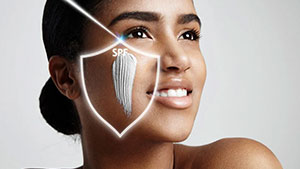How To Know Your Skin Type

Do you ever wonder why some products work great for others but not for you? It might be because you’re using products that aren’t right for your skin type.
Knowing the different skin types is super helpful because it helps you choose the best products for your skin’s needs and keeps your skin looking its best. Discover how to figure out your skin type and why it’s so important.
What Are the Main Skin Types?
There are a few main types of skin: normal, combination, oily, acne-prone, and dry. “Knowing your skin type can help you select products that are most appropriate for use,” says board-certified dermatologist Brendan Camp (1).
“For example, someone with oily or acne-prone skin may want to stick with oil-free or water-based moisturizers, while someone with dry, sensitive skin may want to avoid potentially aggravating ingredients like fragrances or dyes.” Each type needs different care, so knowing which one you have is helpful.
Normal Skin
Normal skin feels balanced. It’s not too oily or dry and rarely reacts negatively to new products or weather changes. People with a normal skin type usually don’t have many breakouts, and their complexion often appears smooth and even.
While normal skin is considered a low-maintenance type, it’s still important to care for it with gentle cleansing and regular moisturizing to maintain its natural balance.
Combination Skin
Combination skin types are both oily and dry at the same time in different areas. The T-zone (forehead, nose, and chin) tends to have excess oil, while other parts of your face, like your cheeks, may feel dry or normal.
“Combination skin is characterized by areas of oily skin — typically in the T-zone area — as well as other areas of dry/normal skin,” says Daniel Isaacs, Director of Research at Medik8 (2). You might notice occasional breakouts in the oily areas and flakiness in the dry areas.
Combination skin requires a mix of products to address these contrasting needs, such as a lightweight moisturizer for the T-zone and richer hydration for dry patches.
Oily Skin
Oily skin tends to get shiny, especially in the T-zone, as it produces more sebum than other skin types. “ Oily skin types tend to have lots of sebum independent of physical exertion,” says surgeon and dermatologist Dr. Rossi, M.D. (3). People with oily skin may have larger pores, which can be more noticeable and prone to clogging, leading to blackheads or breakouts.
While oily skin can be frustrating, it often ages more slowly, as the natural oils help keep skin hydrated and reduce the appearance of fine lines.
Acne-Prone Skin
Acne-prone skin breaks out easily, and may experience blackheads, whiteheads, or even painful cystic acne.
“Acne-prone skin is more likely to get pimples or clogged pores due to high oil production,” says board-certified dermatologist Dr. Nazarion (4). This skin type can be oily, sensitive, or both, and it often reacts negatively to heavy or pore-clogging products. Hormonal changes, stress, and certain foods can also trigger breakouts.
Managing acne-prone skin generally requires gentle, non-comedogenic products and ingredients like salicylic acid or benzoyl peroxide to help clear pores and prevent breakouts.
Dry Skin
A study found that the dry skin type was more common in older people, with 53.6% of the oldest group reporting dry skin compared to 30.8% of the youngest group (5). Dry skin feels tight and may flake, especially after cleansing or during colder months due to environmental factors. “Dry skin has a tendency towards redness, scaly patches, and the feeling of tightness,” says consultant dermatologist Dr. Mahto (6).
It can look rough, and sometimes fine lines or redness appear earlier due to a lack of moisture. Dry skin can also feel itchy or uncomfortable, particularly if not properly hydrated.
Using rich, nourishing products with ingredients like shea butter or ceramides can help restore the skin’s moisture barrier and keep it soft and smooth.
How Can You Identify Your Skin Type?
Figuring out your skin type might seem tricky, but it’s easier when you know what to look for. Here are some key ways to pinpoint your skin type and better understand how to care for it.
How Does Your Skin React to New Products?
Pay attention to how your skin responds when trying new products. If it gets red, itchy, or breaks out, you may have sensitive or acne-prone skin. Sensitive skin is often reactive to fragrances, dyes, or certain active ingredients like retinol or exfoliating acids. Acne-prone skin may not tolerate heavy, pore-clogging products, leading to more frequent breakouts.
Tip: When testing a new skincare product, try applying it to a small area first, like behind your ear or along your jawline, to see how your skin reacts.
Do You Experience Areas of Dryness?
Dry skin often feels tight, especially after washing your face, and may develop flaky or rough patches. You might notice this dryness more in colder weather or after spending time in air-conditioned spaces.
Dryness can occur anywhere but is most common on your cheeks, forehead, or around your eyes. If hydrating creams and moisturizers seem to soak into your skin quickly, that’s another clue you might have dry skin.
Tip: Look for hydrating ingredients in your skincare, like glycerin, ceramides, or hyaluronic acid, to keep your skin feeling soft and smooth.
Is Your T-Zone Shiny?
The T-zone includes your forehead, nose, and chin. If this area tends to get oily or shiny throughout the day, it’s a strong sign you have either oily or combination skin. Oily skin usually produces excess sebum across the entire face, while combination skin is oily only in the T-zone and dry or normal elsewhere.
Tip: If your T-zone stays shiny even after washing or blotting your skin, consider using lightweight, oil-free products to keep oil production in check without drying out other areas.
How Does Your Skin Feel After Cleansing?
”The easiest way to know your skin type is to cleanse your skin and leave for 30 minutes without applying any skincare. No toners, essences, serums, or moisturizers. After half an hour you will be able to observe the level of oil the skin has produced,” says skincare expert Fiona Brackenbury (7). The way your skin feels immediately after washing can reveal a lot about your skin type.
- Dry skin feels tight or uncomfortable and may need a moisturizer right away.
- Oily skin may feel greasy again just a short time after cleansing.
- Combination skin might feel tight in some areas (like the cheeks) but oily in others (like the T-zone).
- Normal skin feels balanced — not too dry or too oily.
By paying attention to these signs, you’ll be able to identify your skin type and tailor your skincare regimen for better results.
Why Is Knowing Your Skin Type Important?
Understanding your skin type is the foundation of any successful skincare routine. It helps you avoid the frustration of using products that don’t work or make your skin worse. Knowing your skin type ensures that you’re addressing your skin’s unique needs, keeping it balanced and radiant.
Plus, it can help prevent long-term issues like premature aging or persistent irritation caused by incorrect product choices.
Choosing the Right Products
Using products designed for your skin type can make all the difference in achieving and maintaining healthy skin.
For example, hydrating ingredients like hyaluronic acid or ceramides work wonders for dry skin, while oil-free, lightweight products are ideal for oily skin. If you have sensitive skin, soothing ingredients like aloe vera or chamomile can minimize redness and irritation.
Matching your skincare to your skin type ensures your products work effectively without causing harm.
Targeting Skin Concerns Effectively
Knowing your skin type allows you to address specific issues like acne, wrinkles, or dark spots with precision. Oily skin benefits from ingredients like salicylic acid, which unclogs pores, or clay masks to reduce shine.
Dry skin can thrive with rich moisturizers containing shea butter or fatty acids. If you’re dealing with fine lines, look for retinol or peptides to support collagen production. A targeted approach saves you time and money while delivering better results.
Avoiding Further Irritation
Using the wrong products can do more harm than good, especially for sensitive or acne-prone skin. For example, harsh cleansers may strip the skin of its natural oils, leaving it overly dry and prone to irritation.
Similarly, heavy creams can clog pores on oily skin, leading to breakouts. By choosing products suited to your skin type, you avoid unnecessary irritation, keeping your skin calm, clear, and comfortable.
The Bottom Line
Knowing your skin type is key to taking good care of it. Pay attention to how your skin reacts to products and how it feels throughout the day. Once you know your skin type, you can pick the right products to keep it looking its best!
Sources
-
How to Know Your Skin Type, According to Experts | Realsimple
-
Best Moisturisers For Combination Skin, Tested And Reviewed | Glamour UK
-
How to Build a Skincare Routine Based on Your Skin Type | Oprah
-
13 Moisturizers For Acne-Prone Skin in 2024, According to Experts | Elle
-
Survey on skin aging status and related influential factors in Southeast China | PMC (nih.gov)
-
What’s your skin type? How to decode your complexion | Cosmopolitan
-
How to identify your skin type: the simple secret to healthy looking skin | Marie Claire UK





